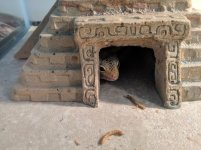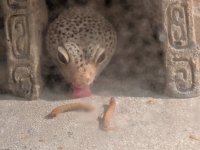GROOVY1975`
New member
Morning all, I have an adult leopard gecko, he was given to me by someone who could no longer care for him. I am a long time lover of lizards and have had numerous geckos (giant day mainly), but this is my first adult leopard gecko. He only seems to eat when I hand feed him by dropping the meal worms right in front of his face. I leave 1 worm in the tank so it roams around and he can eat when he is hungry. Overnight I noticed the worm was still there after 3 days (I usually feed him every 3 days a few worms until he stops eating). My question is, is this normal, how often should he eat, and why does he only eat when I hand drop it and move it right in front of his eyes? Is it possible eyesight issues or am I feeding him wrong meal worms, or whats going on? I love the little guy so I dont want to harm him but I am confused. To recap, he only seems to eat when I drop it right in front of him then help him by gently pushing the worms under his mouth. He seemed hungry as he ate a few but there was a worm in there all along that he didnt touch UNTIL I moved it to his mouth, then he gobbled it and licked his lips.
Any help or advice would be greatly appreciated.
Any help or advice would be greatly appreciated.



